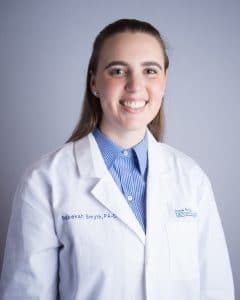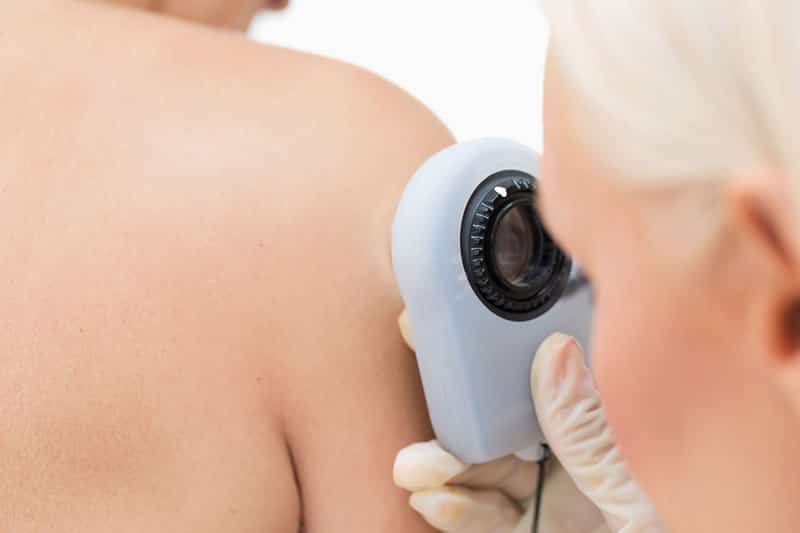What’s a Full Body Skin Exam?
Did you know skin cancer is the most common type of cancer? In the United States, more people are diagnosed with skin cancer each year than all other cancers combined. Anyone can develop skin cancer, regardless of your skin color. One in five Americans will develop skin cancer by the age of 70. It is not uncommon for skin cancer to be dismissed as a stubborn bump that won’t go away or a sore that won’t heal.
It is not uncommon for skin cancer to be dismissed as a stubborn bump that won’t go away or a sore that won’t heal.
When left untreated, skin cancer will continue to grow and can eventually cause disfigurement and sometimes loss of function. And in some cases, skin cancer can metastasize and become life-threatening. Some cases are even fatal. However, when detected early, skin cancer is highly treatable and curable if treated early on.
You can detect skin cancer early by scheduling a Full Body Skin Exam with your dermatologist. During your Full Body Skin Exam, your dermatologist will look at your skin for signs of skin cancer and will explain how to check your skin at home for signs of skin cancer.
A full body skin exam, or skin cancer screening, may seem daunting, but it’s easier than you think. We want you to be comfortable during your appointment so here are a few things to know about full body skin exams. We want you to know what to expect before, during, and after your appointment.
Before the Exam
If you wear makeup or nail polish, it’s best to remove it before your appointment; your dermatologist will want to examine your skin and your nails without cosmetic products on it as your exam will be more effective if your dermatologist can see your natural skin.
Also, it’s helpful to make a note of any areas or spots that stand out to you or are concerning to you so that during your appointment you can bring these to your dermatologist’s attention.
During the Exam
During your appointment, you’ll be asked some questions about your history of sun exposure including wearing sunscreen, sunburns, indoor tanning, personal skin cancer history, family skin cancer history, if there are any new spots on your skin, and if any specific things have been worrying you. Then you’ll be asked to change into an exam gown.
Because skin cancer can occur anywhere on your body, a full body skin exam, or skin cancer screening, is from head to toe. Your dermatologist will start by examining your hair and your scalp and will then check your face, neck, chest, arms, hands, abdomen, back, buttocks, legs, and feet. Each part of your skin will be thoroughly examined. Sometimes a dermatoscope will be used to examine a skin lesion in more detail. A dermatoscope is a handheld device used to magnify and illuminate the skin and helps your dermatologist get a better look at a particular spot. As your dermatologist is checking your skin, this is a great time to ask about any suspicious areas or spots that stand out to you or that are concerning.
What Are We Looking For?
If you’re wondering what your dermatologist will be looking for, it’s small, pink-red scaly spots on the face, chest, arms, and hands (possible pre-skin cancers, called actinic keratoses). Pink, pearly, rough, or scaly bumps or sores that won’t heal (possible skin cancers, called basal cell carcinoma and squamous cell carcinoma). Moles that are asymmetric, have uneven borders, are dark in color or that have an unusual color, or are a large size (possible skin cancer, called melanoma). And, any mole that stands out as being different from all of the other moles around it (possible atypical mole or melanoma).
If there are any suspicious findings during your exam, your dermatologist may recommend a biopsy. A biopsy is not something to fear, nor does it mean that you have skin cancer; it just means your dermatologist wants to determine the diagnosis accurately. A biopsy is merely a diagnosing tool that the doctors use to identify what type of skin lesion you have. It’s a quick, simple procedure that takes about 5 minutes. A small sample of the suspicious lesion is removed and sent to a lab where the sample will be examined under a microscope to determine if the lesion is benign (non-cancerous) or cancerous and if further treatment is needed.
After the Exam
At the end of your full body skin exam, your dermatologist will discuss her findings and treatment recommendations. Based on your exam and your past medical history, your dermatologist will make a recommendation about how often you should come in for a full body skin exam.
Full Body Skin Exams Can Save Your Life
In conclusion, we want you to feel comfortable when visiting our office for your full body skin exam and hope that this article has answered some of the questions you may have about full body skin exams.
A full body skin exam could save your life. We encourage all of our patients to come in, at least once, for a full body skin exam. A full body skin exam is an easy and effective way to detect and treat pre-skin cancer as well as skin cancer. And keep in mind, when detected early, skin cancer is highly treatable and curable if addressed early on.
About the Author

Rebekah Smyth, PA-C is a nationally board certified PA and is licensed by the medical board of Maryland. After completing school, Rebekah furthered her dermatology training by earning the prestigious status of Diplomate Fellow by the Society of Dermatology Physician Assistants. Rebekah has also completed additional surgical training under Dr. Allan Harrington, MD and Dr. Mary Farley, MD at our Skin Cancer Surgery Center in Annapolis, MD.
To schedule an appointment with Rebekah, please call 443.351.3376 or Request an Appointment
































